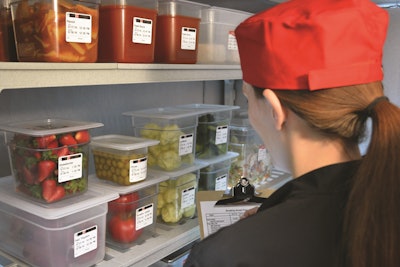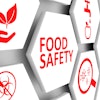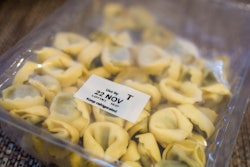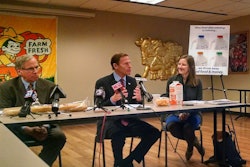
Let’s face it, when it comes to food, we live in a grab-and-go world. People lead busy lives and are constantly on the go, leaving them little time to prepare something for breakfast, lunch or even dinner. So, without much thought, they often quickly grab something to eat and get on with their day.
As this grab-and-go food world has evolved, so have the printed labels found on these items. While the first such labels came about in the 1970s, several terms found on these labels today simply were not around 40 years ago, according to Professor Emily Leib, director of the Harvard Food Law and Policy Clinic.
These terms and labels are intended to help consumers make purchasing selections, but over the years it appears that they have caused more confusion than clarification. And it’s not just consumers who are confused but many of us in the food service industry as well.
To see what we mean, take the following short quiz on food label terminology. At the end of the quiz, we’ll reveal the answers and then explore one of the most confusing terms on food labels: the different dates and wording found on many grab-and-go food items.
The Quiz
Respond by answering true or false to the following statements:
1. A product labeled “gluten-free” means that the product is completely free of gluten protein.
2. The top food allergens required to be identified on a food label are wheat, soy, milk, peanuts, tree nuts, fish, shellfish and eggs.
3. Eggs labeled “free range” indicate that the chickens can forage around a farmyard freely.
4. The terms “sell by” and “use by” both reference the expiration date of a product.
5. “Best if used by” refers to the time when the food is at its peak in regard to its flavor and quality.
The Answers
As you responded to these questions, you likely could see how confusing some terms might be, especially for consumers. But, of course, we in the food industry know the answers, right? Or do we? Let’s check:
1. False. A gluten-free food is not necessarily completely gluten-free. For a food to be allowed to carry this label, it must contain less than 20 parts per million of gluten, an amount that many experts believe is far too high.
2. True. These are the top eight food allergens required to be identified on food labels.
3. False. The term “free range” seems to be universally misunderstood. What it means is that the chickens have “access to the outside.” Even if Mom decides to spend all her time in the cage, the eggs she hatches can still be termed “free range.”
4. False. We’ll discuss date terms in greater detail following, but suffice it to say that these terms do not mean the same thing nor do they necessarily mean the same thing to consumers as they do to retailers.
5. True. “Best if used by” is a new term that was created to help end a lot of grab-and-go label confusion; again, these date terms on labels will be discussed in more detail following.
So, how did you do? If you got stumped on a couple of these, just think about how the poor consumer feels. You can see why clarification of these terms is needed. To help our customers, we must first educate ourselves as to what these terms mean. We, in turn, can help educate our customers, so that they can make more effective purchasing decisions, which will ultimately help the food service industry reduce costs and food waste.
All Those Date Terms
Starting this year, the U.S. Department of Agriculture (USDA) Food Safety and Inspection Service (FSIS) suggests that terms such as "use by" and "sell by" be replaced with the term "best if used by." Research indicates that consumers better understand this term as an indicator of food quality and safety, which is exactly what the new term is designed to do. *
Further, “best if used by” is intended to replace the term “sell by,” which is often used as “code” for the retailer to indicate how long a product should be displayed on a shelf, but it is not necessarily an expiration date. Nor is the term “use by” necessarily an expiration date. Very often a grab-and-go food item labeled with either “use by” or “sell by” may stay on the shelf a day or two (or longer) past the label date and still provide the customer with a safe food choice. Doing so would help reduce food waste and costs for the retailer.
Among all these different and confusing terms surrounding food labeling, here’s a little-known fact: except in the case of infant formula, product dating is not specifically required on any food products sold in the United States.
With that said, few of our customers likely will feel comfortable selecting a food product that is not clearly, legibly and accurately labeled—not only as to date but also as to ingredients, allergens and related information.
This is why retailers marketing grab-and-go food items, a product line that is expected to grow even more in the years to come, need access to easy-to-use, easy-to-learn product labeling systems. This is particularly true for those with multiple outlets.
In such cases, grab-and-go food labels may need to be updated in all locations at the same time. Having a uniform labeling system that all retailers and consumers can understand provides consumers with clear and consistent information when selecting grab-and-go food items and helps retailers reduce costs related to food loss and waste.
*As of February 2017, the Grocery Manufacturers Association (GMA) is encouraging its members and manufacturers in the food service industry to adopt the term “best if used by.” This endorsement helps ensure that this new term will be adopted over time throughout the food service industry. According to the GMA, currently there are more than 10 different date labels on food items marketed in the United States. Some of the most common are “sell by,” “use by,” “expires on,” “best before,” “better if used by,” or “best by.”



















